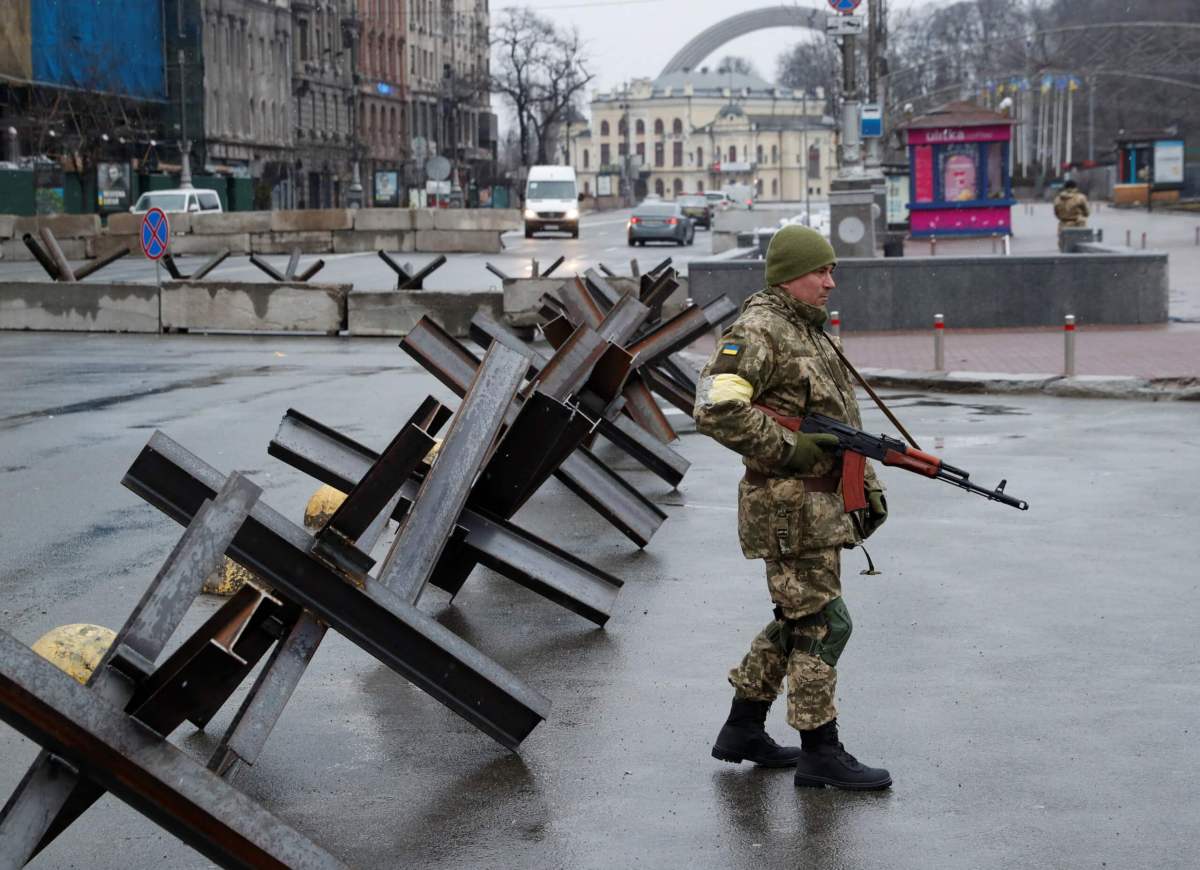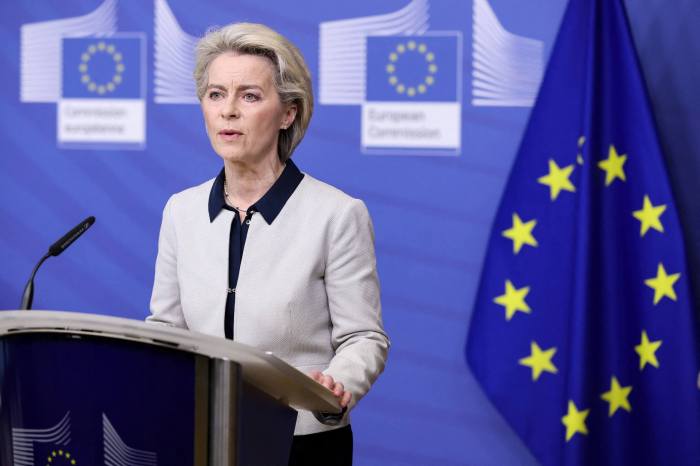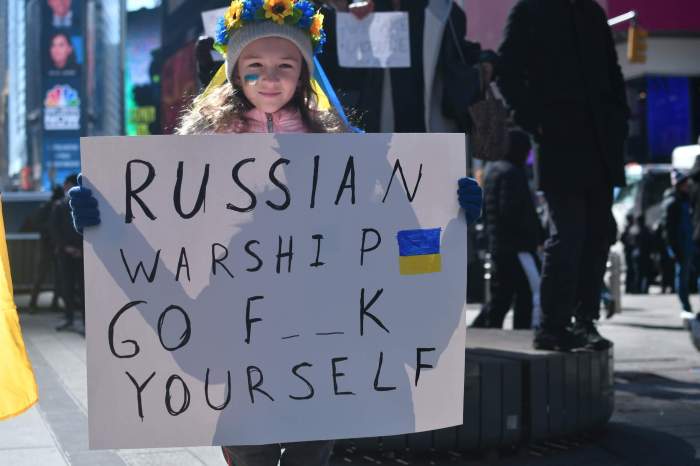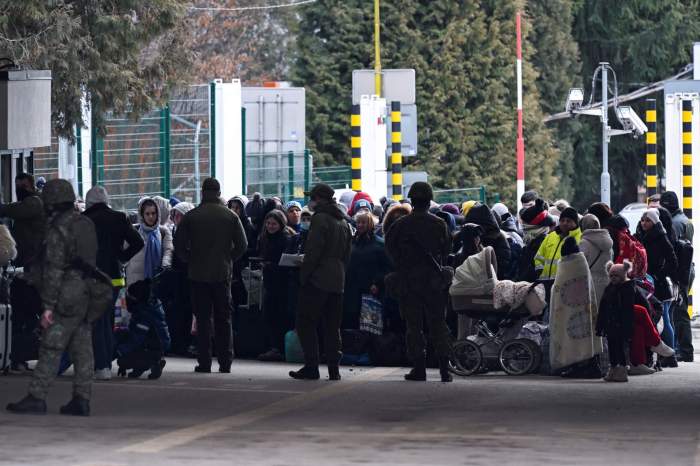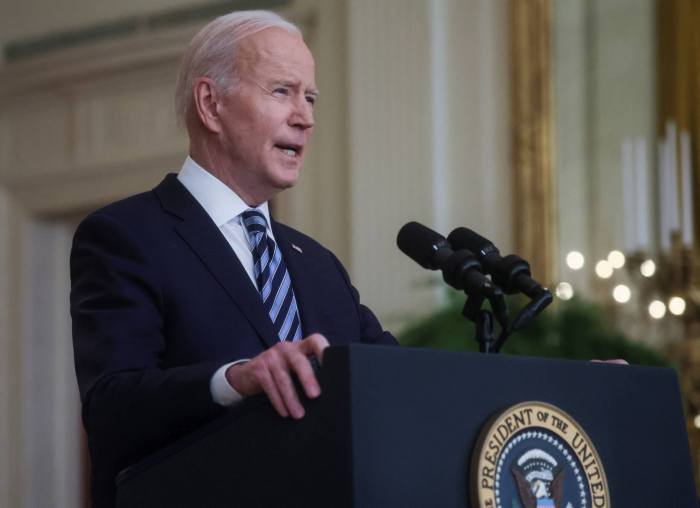As Russian troops closed in on Ukraine’s capital Kyiv on Thursday, a muddy construction site in a local neighborhood was teeming with workers and welders of the KAN real estate developer.
Instead of homes and offices, they were making giant, metal anti-tank barricades known as “hedgehogs”, and smaller spiked barriers aimed at stopping wheeled vehicles.
After Russia invaded Ukraine on Feb 24, KAN, a large local property company, reinvented itself to help the defenses of the city of 3.4 million people.
Zakhar, a foreman, picked up the phone and started calling the company’s construction workers who had remained in Kyiv. Almost everyone volunteered to stay and contribute, he said.
“We build things. We do not know how to fight, but we knew we could be useful,” Zakhar said. A few meters away, sparks flew as builders cut through and welded together large metal beams.
It is another example of how Ukrainian civilians are supporting regular troops as they try to repel Russia’s advance, including through civil defense units and independent militia that have formed across the country.
Russia says its actions in Ukraine are a “special operation” not designed to occupy territory but to destroy its neighbor’s military capabilities and capture what it calls dangerous nationalists.
Ukraine’s military is dwarfed by that of its powerful neighbor, but resistance in the first week of the conflict has slowed Russia’s progress, particularly in urban areas.
Russia has captured one Ukrainian city so far – the southern Dnipro River port of Kherson – and has bombarded others with increasing intensity, including Kyiv and the country’s second city Kharkiv.
A giant column of Russian armor has stalled as it approaches Kyiv from the north, delayed by resistance, mechanical failures and congestion, according to the British defense ministry.
Hundreds of thousands of people have fled the violence and crossed into neighboring countries. Men of fighting age are prevented from leaving Ukraine.
‘We will throw spears’
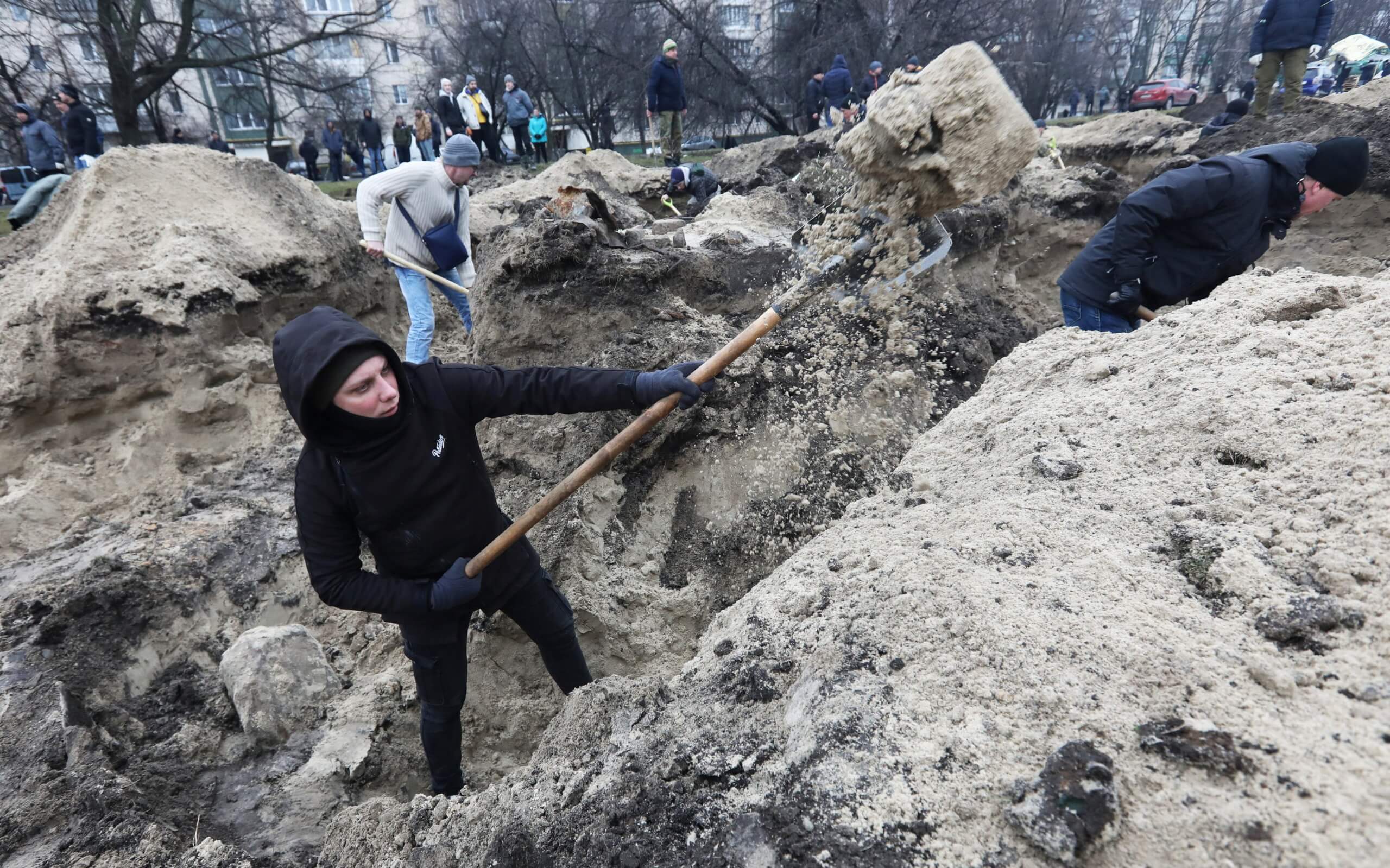
On Feb. 25, Kyiv’s mayor and boxing champion, Vitali Klitschko, said the city “has gone into the defensive phase.”
Heavy equipment was brought in to build concrete checkpoints, blocking positions and bunkers inside the city and along all major roads and in the suburbs.
At KAN, workers cut long pieces of girder using blow torches and angle grinders, welding them together into triangular barriers used to bolster fortifications and slow the movement of tanks and tracked armored personnel carriers.
Oleksandr Bodyuk, the company’s deputy director, said workers were also using reinforcing bars and girders salvaged from construction sites to produce spiked, movable defenses against wheeled vehicles, including trucks.
So far the makeshift factory, which started operating this week, has produced 110 large hedgehogs, including 40 in the fist 12 hours, Bodyuk said, adding that the company runs other similar sites in the city.
“We have demands from many places for these types of blocking devices, we deliver them wherever they are needed in the area … subcontractors and friends are providing transportation for the products and the material,” he said.
Andriy Kryschenko, Kyiv’s deputy mayor who was wearing military fatigues, said many similar firms and workshops had adapted to produce hedgehogs, concrete barriers and other defenses.
He added that tens of thousands of people in Kyiv had received weapons and many more were waiting at enlistment and recruitment offices. The city hall was also supporting Territorial Defense units and troops at the frontline, Kryschenko said.
At the construction site, Serhiy Serdyuk, a grizzled welder in his 50s, said workers were ready to take up weapons and join the fight.
“If we have to, when the materials run out, we will make spears and we will throw those spears at them.”
Humanitarian corridors
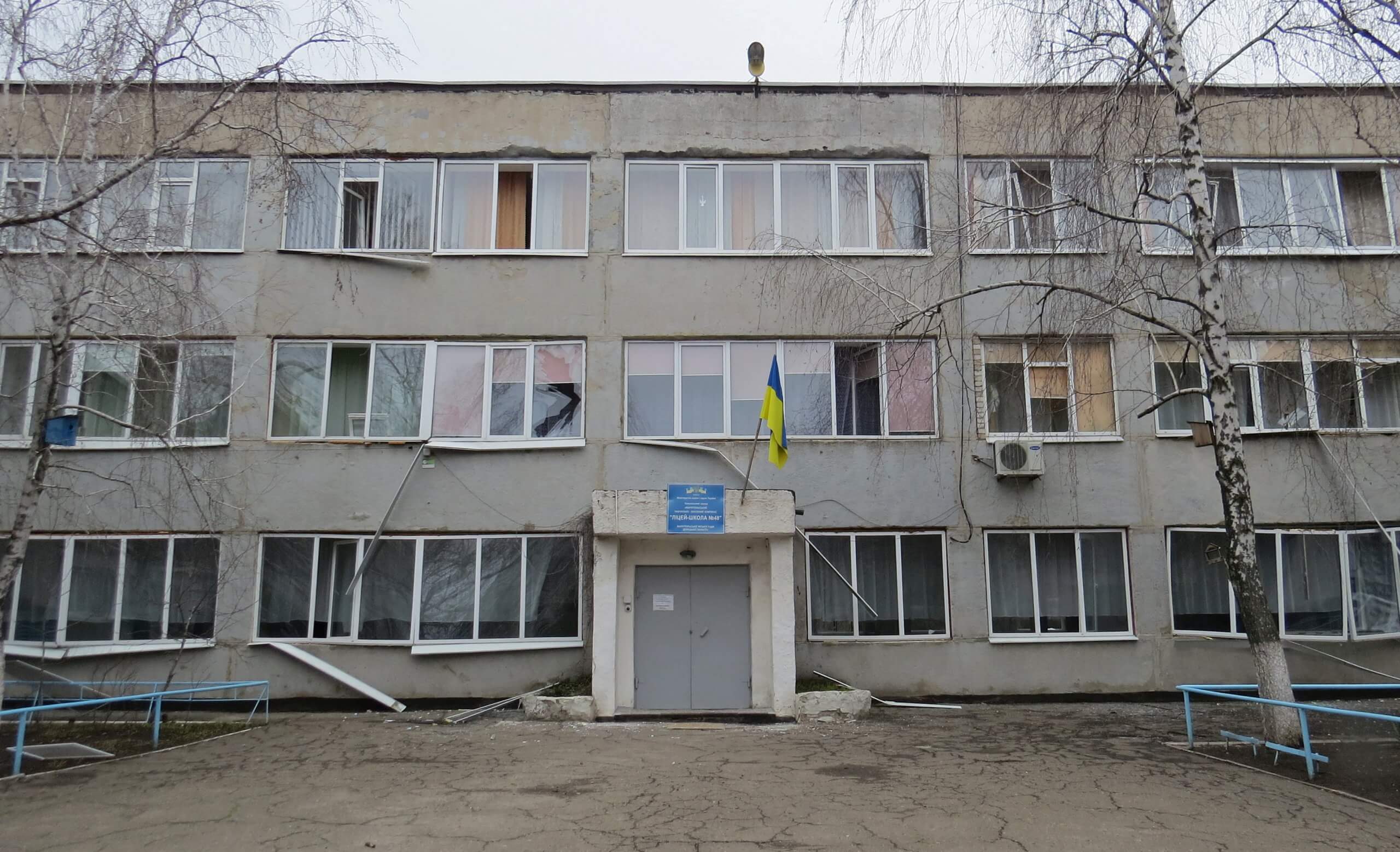
A Ukrainian negotiator said on Thursday that a second round of ceasefire talks with Russia had not yielded the results Kyiv hoped for, but the sides had reached an understanding on creating humanitarian corridors to evacuate civilians.
Ukrainian presidential adviser Mykhailo Podolyak said the two sides envisaged a possible temporary ceasefire to allow for the evacuation of civilians.
“That is, not everywhere, but only in those places where the humanitarian corridors themselves will be located, it will be possible to cease fire for the duration of the evacuation,” he said.
They had also reached an understanding on the delivery of medicines and food to the places where the fiercest fighting was taking place.
It was the first time the two sides had agreed any form of progress on any issue since Russia invaded Ukraine a week ago.
Podolyak said the outcome had fallen short of Kyiv’s hopes, however.
“To our great regret, we did not get the results we were counting on,” he said, without elaborating.
“The only thing I can say is that we discussed the humanitarian aspect in sufficient detail, because quite a lot of cities are now surrounded. There is a dramatic situation with medicines, food, and evacuation,” Podolyak said.
Still, the bombings go on.
At least 22 bodies have been recovered from rubble in the wake of Russian air strikes in Ukraine’s Chernihiv region, the Ukrainian emergency services said in an online post.
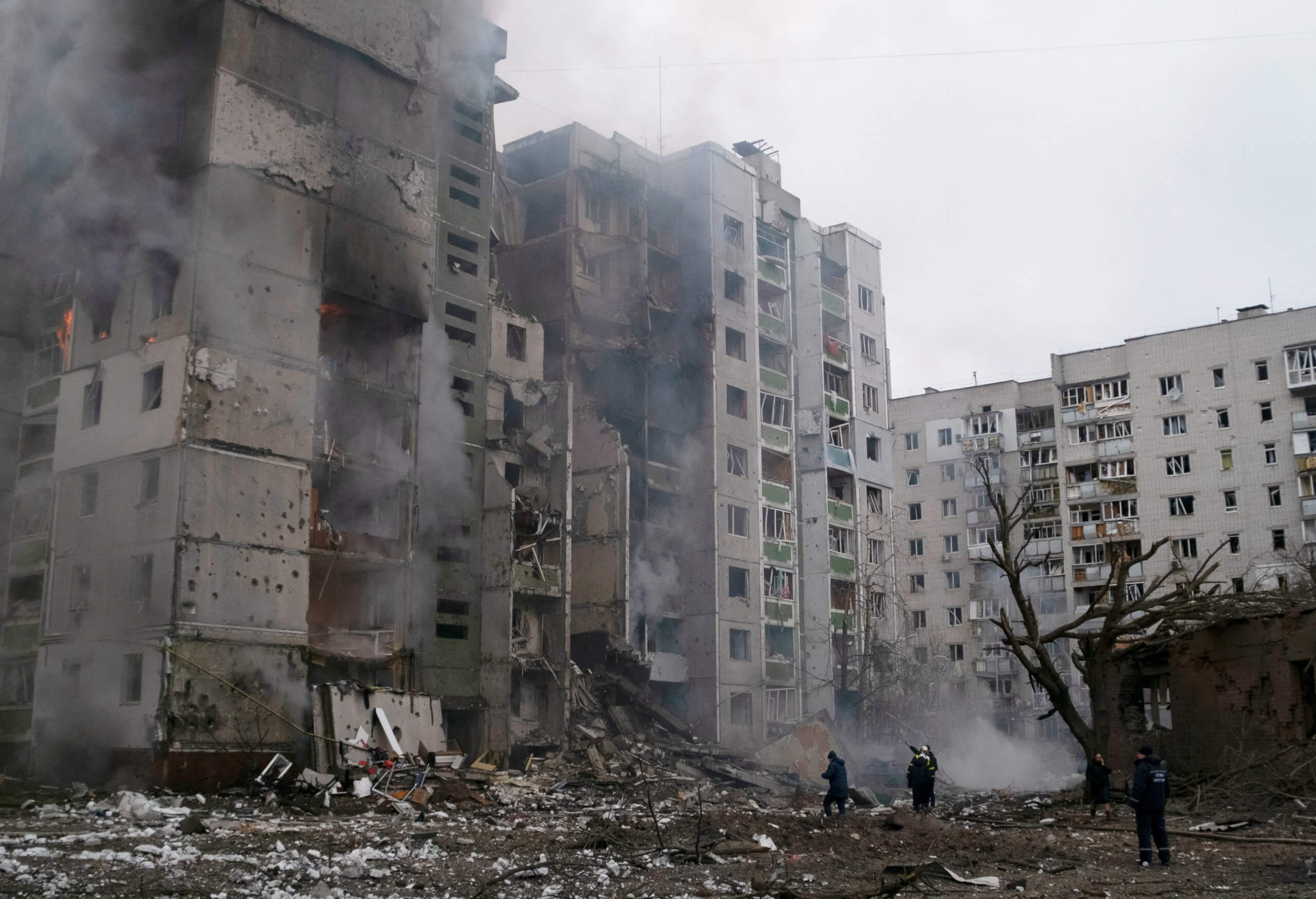
It said rescue work was ongoing, without specifying where exactly the attack took place. Earlier the regional governor said at least nine people had been killed by an air strike on two schools and private houses.
Meanwhile, Russian forces are trying to blockade the southeastern Ukrainian port city of Mariupol, knocking out power, water and heating supplies with bombardment that is preventing residents from fleeing, local authorities said on Thursday.
As Russia’s invasion of Ukraine enters its second week, the port city is seeing some of the fiercest fighting with constant shelling for the past 24 hours, Mayor Vadym Boichenko said in a video broadcast.
The city authorities likened the Russian onslaught to Nazi Germany’s protracted deadly siege of the then-Soviet city of Leningrad during World War II.
“Mariupol remains under fire. Women, children and the elderly are suffering. We are being destroyed as a nation. This is genocide of the Ukrainian people,” the city’s council said in a statement.
Relatives of people still in the city told Reuters they had not heard from their loved-ones due to the power outage and were desperate for news.
“They are now in the very center of hostilities and I am far from them and cannot help,” said 30-year-old driver Dmitriy, who had traveled abroad for work just before war broke out, leaving his wife and young son in Mariupol.
“I’ve not been able to reach them for around 24 hours,” he said by message. “We all lived a peaceful life, working, studying, making plans, until life turned completely upside down.”



